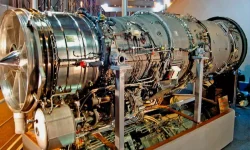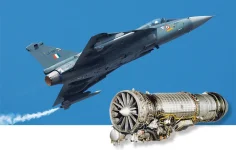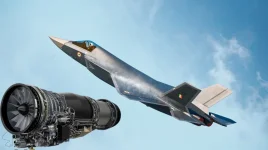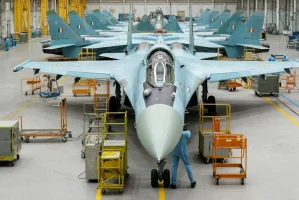- Views: 2K
- Replies: 7

Bengaluru-based Hyprix Aviation has achieved a significant milestone in India's defence sector by successfully testing Tezz, the nation's first privately developed liquid-fueled supersonic ramjet engine.
This breakthrough, achieved in collaboration with the National Centre for Combustion Research and Development (NCCRD) at IIT Madras in January 2025, marks a crucial step towards self-reliance in advanced propulsion technology.
The company, founded by Devmalya Biswas (23) and Divyanshu Mandowara (22), is now focusing on developing ramjet-powered artillery shells, further demonstrating the potential of private sector innovation in defence.
Hyprix's achievement comes as India's private defence manufacturing sector is witnessing a surge in activity. Homegrown companies are increasingly venturing into areas previously dominated by state-run agencies and international defence giants.
Hyprix, established in June 2024, has rapidly progressed from design to testing of Tezz in just five months, underscoring the agility and innovation of the private sector.
The company's focus on advanced propulsion systems, crucial for next-generation missiles and high-speed aerial platforms, positions it at the forefront of India's defence technology development.
This rapid progress has been facilitated by government support through initiatives like Startup India and grants, enabling Hyprix to leverage resources effectively.
Tezz, capable of operating at speeds between Mach 2 and Mach 4, represents a significant advancement in indigenous propulsion technology. Ramjet engines, which utilize the incoming air for combustion without mechanical compressors, are essential for maintaining supersonic speeds in modern missile and aerospace systems.
This successful test demonstrates the growing capabilities of the private sector in a field traditionally restricted to government research institutions and foreign contractors.
The engine offers considerable advantages over conventional rocket-powered systems, including improved efficiency, extended range, and sustained supersonic speeds, making it ideal for supersonic missiles and high-speed reconnaissance platforms.
Beyond defence applications, Hyprix is also exploring the use of Tezz in next-generation aerospace platforms, highlighting its broader technological ambitions.
Building on the success of Tezz, Hyprix is currently developing Kira M1, a solid-fueled ramjet-propelled 155mm extended-range artillery shell.
This development addresses a critical need for the Indian armed forces, which face a significant gap between domestic shell production and wartime requirements. Kira M1, unlike the liquid-fueled Tezz, utilizes solid-fueled ramjet technology specifically designed for artillery systems.
It is projected to achieve a range nearly four times greater than conventional 155mm shells. Furthermore, Kira M1 incorporates AI-guided navigation, enhancing precision and minimizing collateral damage, features increasingly important in modern warfare.
Hyprix is currently engaging with the Army Design Bureau and the Artillery Directorate for the vested development of Kira M1, demonstrating the growing collaboration between private innovation and military modernization efforts.
While global defence companies like Nammo and Boeing are also pursuing ramjet-propelled artillery technology, Hyprix's work marks India's first private sector entry into this advanced segment.
As global demand for precision-guided munitions increases, this development has the potential to position India not only as a self-sufficient defence producer but also as a future exporter of advanced military technology.
The expansion of the private sector in defence aligns with the government's broader strategy to achieve Rs 3 lakh crore in domestic defence production by 2029. This initiative aims to foster an ecosystem where homegrown companies can contribute to strategic technological capabilities.
The emergence of companies like Hyprix, capable of developing advanced systems like Tezz and Kira M1, signals India's transition from a major arms importer to a potential global supplier of advanced defence and aerospace systems.
The market for advanced artillery shells, missile systems, and supersonic aerial platforms is expected to expand considerably due to rising military spending and evolving warfare doctrines.
With increased private sector participation, India's standing in the global defence supply chain is poised to strengthen, offering cost-effective and innovative solutions for both domestic and international needs.
The coming years will be crucial in determining how effectively India's private defence sector can translate these technological advancements into scalable production and sustained global competitiveness.




